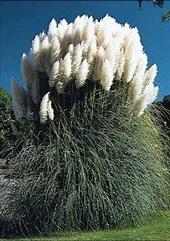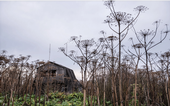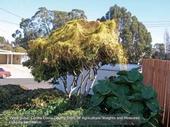- Author: Marie A. Jasieniuk
- Posted by: Gale Perez

I read an interesting paper* recently about the sale and spread of invasive ornamental plants in the U.S. The paper describes the results of a study that examined whether identifying a plant species as invasive influenced its availability for purchase from the plant trade industry.
The authors assembled a list of 1,285 species identified as invasive or noxious in the lower 48 states from federal and state noxious weed lists, state invasive plant lists, and the Invasive Plant Atlas. They then searched for places to purchase plants or seeds of the species using Google and a database of nursery catalogs. Two classes of sellers were searched: (1) commercial nurseries with a storefront or garden center and (2) the e-commerce trade...
- Posted by: Guy B Kyser

From New York Times, 3 October 2020 - A sad story about a poisonous invasive weed.
- Author: Marie Jasieniuk
- Posted by: Gale Perez
The global horticultural trade in ornamental plants is well known to be a primary source of non-native invasive plant introductions worldwide. In the United States, non-native species make up as much as 80% of the ornamental nursery stock and account for most nursery revenue. Although only a small percentage of these species escape cultivation and become invasive, the large number and diversity cultivated, especially in California, results in ornamental plants contributing to more than half of the invasive weeds currently damaging California's wildlands and remnant natural areas in urban landscapes.
The majority of ornamental plants are purchased and grown by the public. Thus, educating consumers to make informed choices towards...
- Author: Ralph Jaggi
- Posted by: Guy B Kyser
The United States Department of Agriculture (USDA) Delta Region Areawide Aquatic Weed Project (DRAAWP) has, as one of its purposes, to enhance and implement the rollout of new, innovative, or unique processes to support finding and controlling aquatic invasive species. It is using that overarching theme that the process described below was conceived.
Weed mapping researchers have long sought methods to better quantify floating aquatic vegetation (FAV) using global information systems (GIS) within specific areas. California State Parks Division of Boating and Waterways (DBW) manages aquatic invasive species on 69,000 acres of the Sacramento-San Joaquin Delta. DBW has identified more than 300 treatment sites in a multitude of...
- Posted by: Gale Perez

From the Pest in the Urban Landscape blog • June 6, 2018
When people think of parasites, often what comes to mind are blood-sucking insects like bed bugs, head lice, and fleas or other bodily invaders on or in humans and other animals. But plants can have parasites too. Most of us are familiar with mistletoe but there is another parasitic plant you may not have heard about:...


